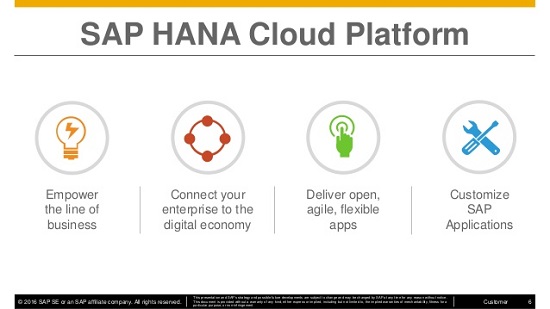

SAP HANA Cloud Platform has been super popular and super important in recent times, with lot of customers going for early adoption of SAP HCP. However, there is still a considerable amount of curiorsity from customers, on how to leverage, how to get started. Sodales conducts HCP roadshows and the feedback that we get from these roadshows is phenomenal.

Here, we are going to focus on some of the best practices and lessons learned, that we captured from our customers who are now successfully live with HANA Cloud platform based tools. What we are going to focus here in HCP projects where customer can develop their own IP, unlike a product based model where an SAP Partner company who owns the IP would deploy the product/app.
Learning 1: Healthy Vendor Relationship
The first step is having a good customer and vendor partnership. Its not a typical customer-vendor relations where you have the consultants coming, executing some work on the project. However, its more of a water tight engagement where the consultants and the customer team work together for the success of the project. This is practically possible, because every tool on HCP is learnable and teachable. Before you proceed further, you need to ensure that you select the right vendor who are

Learning 2: Understanding The Problem Statement
The second important learning or best practice is to have a better and more clear understanding of the problem statement. The requirement gathering process is way different from what used to happen in the past. In today’s environemnt, the process has to be very agile. For companies who are not used to cloud based model with pre-configurable tools,its a different style. So to feel comfortable especially in the beginning, you can get started with an area that you are aware of. For eg: problems that you are aware of in inventory side, or month end sideetc. So very easy to get started where you are more sure about the problems, specially in the beginning when you are starting the project but if you come up with a brand new idea or a brand new unarticulated need that you gonna need some time to formalize the entire prototype or formalize the entire requirement into something that can be signed off from your users, that should your secondary use case or something that can be addressed by buying a product or a pre-packaged solution that you can buy from a partner or SAP.
The reason we recommend you to start with the problem area that you are aware of is because you can expect concrete results that you can follow through in this entire journey.
Learning 3: Its ok to have a mix of cloud/on-premise.
Often when the customers when they start and evaluate HCP, they think this is the right solution and then they bring all the groups, for eg: groups who are on the customer side, and they expect everyone to be on the same level of understanding from day one and it gest very confusing. What we recommend at the beginning to run a successful project, most of these customers have a mix of different types of cloud platforms.
Some of our recent go-lives have had scenarios where customers have had Microsoft Azure, AWS, or even some third party cloud platforms that was considered for their specific business process. HCP fit into the specific area of the business where they had an immediate need. In the beginning, when you are exploring your used cases and creating a big scope of your project to go through this whole R&D and not seeing any result, what we recommend is to take the used case which you are aware of and which you know is the pain area and just get started, dont wait for it.
Learning 4: Start with small focused use cases to validate technology
It is extremely important to identify small used cases and when we say small, we mean anything that you can execute within 4 weeks. Identifying small used cases to allow you to validate technology. So when we mentioned earlier about knowing the problem areas, you can pick the small used cases from there and validate your technologies that you are going to choose and how you are going to use them in your environment, in your culture early on. That is going to be extremely useful for you, for your management, for your budgeting team who is going to be paying for the licenses of HCP
Learning 5: Document The Efforts
Once you have done these small used cases, you need to go back, capture every single hour that is spent on it. The hours will be
1. Time spent in R&D
2. Training hours
3. Time spent in reading any documentation
4. Time spent in development
5. Time spent with consultants
6. Time in debugging issues
7. Time in OSS message-to know the TAT
This will give a much clear picture that you can now apply, almost like arule of thumb or a guiding principle for your upcoming projects. Reason being, every environment in every customer is going to be different. Hence, very important to Create your own HCP templates and effort guidelines that fit your culture. Your environment is different from others and hence th time for an HCP project will vary, it might be lesss or more, depends completely on the environment.
So,these are some of the best practices that we have put forward from our learnings with customers. Sodales Solutions conducts roadshows across the NOrth American continent to help customers understand what HCP is and how can they implement the best practices.
Sodales Solutions Inc is an award winning SAP HANA Cloud Platform Solution Extension Partner. We have developed more than 100 SAP HANA Cloud Platform based packaged apps. We were the first SAP partner to co-develop an S/4 HANA extension app at SAP co-innovation lab.
Write to us at sana.salam@sodalessolutions.com or call us at +1.647.824.4286 and we will enroll you to our envision workshops on SAP HANA Cloud Platform.